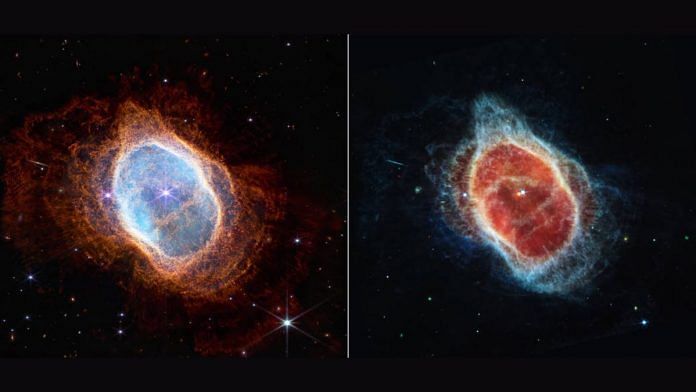Bengaluru: Astonishingly deep images of distant galaxies, signs of water in the atmosphere of a distant exoplanet, four galaxies pulling at each other amid a trail of dust, gas and stars, and an almost wallpaper-esque image of a young star located 7,600 light years away.
New images from the James Webb Space Telescope — referred to as JWST or just Webb — show the universe as it has never been seen before.
The first image was unveiled as a surprise on 11 July by US President Joe Biden. It has been described as the deepest and sharpest image of the distant universe so far. Four other images followed the next day.
Images from the outer planets of the solar system and an exoplanetary system are expected to be released Thursday.
Launched in 2021 on Christmas Day from French Guiana, South America, as the scientific successor to NASA’s Hubble (ongoing since 1990) and Spitzer (2003-2020), the JWST is the largest and most complex science observatory ever built by humankind.
The telescope, which is an international collaboration involving more than 20,000 individuals and 120 organisations, companies, and universities from America, Europe, and Canada, as well as their space agencies, orbits the sun in a ‘halo orbit’ (orbiting around nothing) at the Lagrange Point L2 — one of five points in a two-body system where the gravitational pull from the bodies and any satellite’s motion balance each other out — in the Sun-Earth system.
Lagrange points are those in a system with two bodies, like earth and sun, where satellites or spacecraft can remain in position because the gravitation pull from these bodies in different directions keeps them locked there. Here, they fall into an orbit around nothing, going around empty space. Since these Lagrange points are fixed relative to earth and sun, they move along with earth as it goes around the sun, so effectively, JWST is in orbit around the sun.
Since the telescope is capable of peering at infrared wavelengths previously unobserved by other space telescopes, the translated false-colour images (colour that does not actually appear in the object but is used to enhance, contrast, or distinguish details) have a wealth of information.
Imagery across the infrared wavelengths provides insights into the processes that drive distant stars and galaxies. The new data is expected to transform scientists’ understanding of the universe.
Also Read: On Jupiter’s icy moon Europa, shallow pools of underground salt water offer promise of life
Galaxy Cluster SMACS 0723
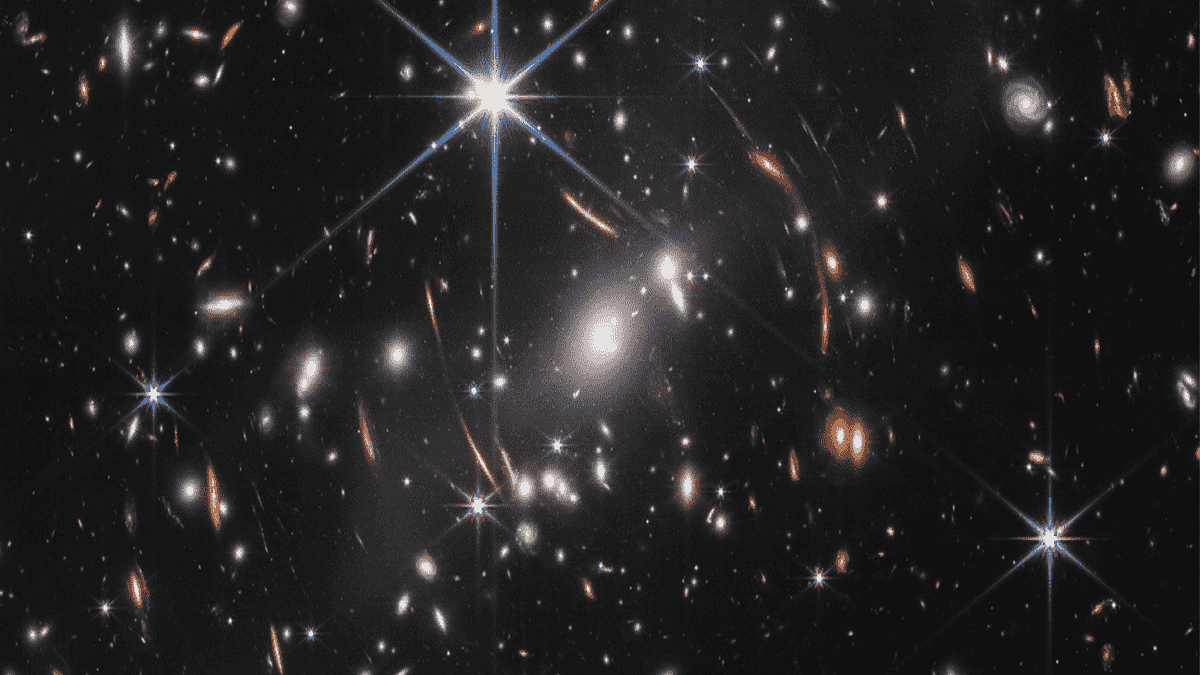
The first image to be released to the public is that of Galaxy Cluster SMACS 0723.
The image shows thousands of galaxies, including the smallest and faintest objects in the sky ever seen by humans. It shows galaxies that formed when the universe was less than a billion years old.
The entire mass of this region of galaxies acts like a gravitational lens, magnifying more distant galaxies that appear stretched out and distorted in the image. The picture is a composite, made from various images at different wavelengths, with an exposure time of 12.5 hours. In contrast, deep field images from the Hubble space telescope — a collaboration between NASA and the European Space Agency — took two weeks of exposure and observation.
The images show SMACS 0723 as it appeared 4.6 billion years ago. It is 5.12 billion light years away today. Further analysis of Webb data of this image will reveal details such as the masses of the galaxies, their individual ages, composition, and evolution.
Exoplanet WASP-96 b’s foggy atmosphere
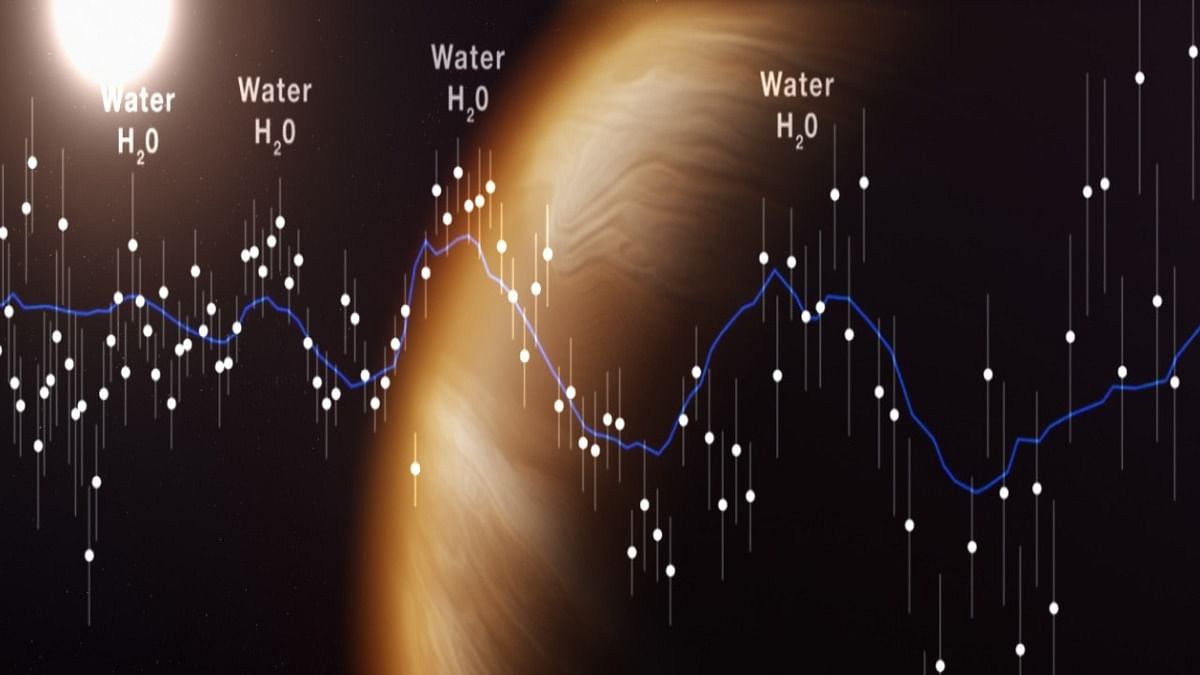
In the second image, Webb has captured evidence of water in the exoplanet WASP-96 b’s atmosphere, along with clouds and haze in the form of a spectrum. The exoplanet is located 1,150 light years away and contains a sun-like star. The planet is an unusual hot gas giant that is 1.2 times the diameter of Jupiter but with less than half its mass. It is also over 500°C hot.
It orbits its host star very closely, in just 3.5 days, and yet its atmosphere contains clouds.
Webb imaged the planet for 6.4 hours as it moved across the star, studying its spectrum and detecting molecules in its atmosphere against the star’s backdrop and without it.
This is the most detailed spectrum of an exoplanet atmosphere captured to date, composed of 280 individual spectra.
Also Read: New signal from 3 billion light yrs away gives insight into a cosmic mystery, fast radio bursts
Southern Ring Planetary Nebula-NGC 3132 (Caldwell 74)

The third image shows a nebula — a giant cloud of dust and gas in space. The image on the left is near-infrared while the one on the right is in mid-infrared. The image shows two stars close together within the nebula orbiting each other. The dust and gas in the second image shows for the first time that the dimmer star is surrounded by dust from the outer layers it blew off.
The stars’ swirling orbits in turn swirl the dust and gas around, influencing the formation of other stars, some of which peek through the dust as flecks of light. The nebula is 2,000 light years away today, and will continue expanding its material for tens of thousands of years.
Interacting galaxies of Stephan’s Quintet
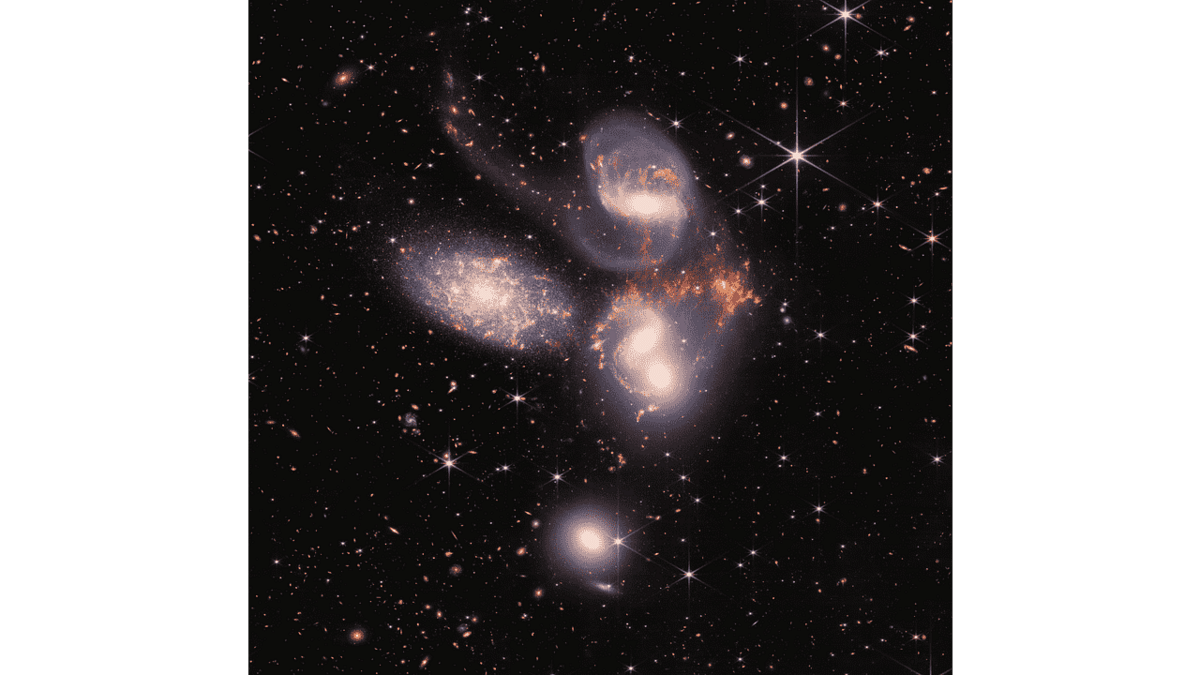
Webb’s largest image is that of a galaxy cluster called Stephan’s Quintet. A mosaic covering over 150 million pixels and made of nearly 1,000 individual images, the image shows never-before-seen details of Stephan’s Quintet — a cluster of four galaxies pulling at each other gravitationally, leading to streaming tails of dust, gas, and stars, and a fifth (leftmost) that is in the foreground.
The four interacting galaxies form the Hickson Compact Group 92 and are expected to merge together.
The separate galaxy, NGC 7320, is 40 million light years away, while the other four (NGC 7317, NGC 7318A, NGC 7318B, and NGC 7319) are 290 million light years away.
The image also shows an enormous shockwave, as NGC 7318B, the lower galaxy among the middle two, moves through the cluster. The composition of the active nucleus and region around it of the supermassive black hole in the top-most galaxy was also studied.
Star-forming region of Carina Nebula
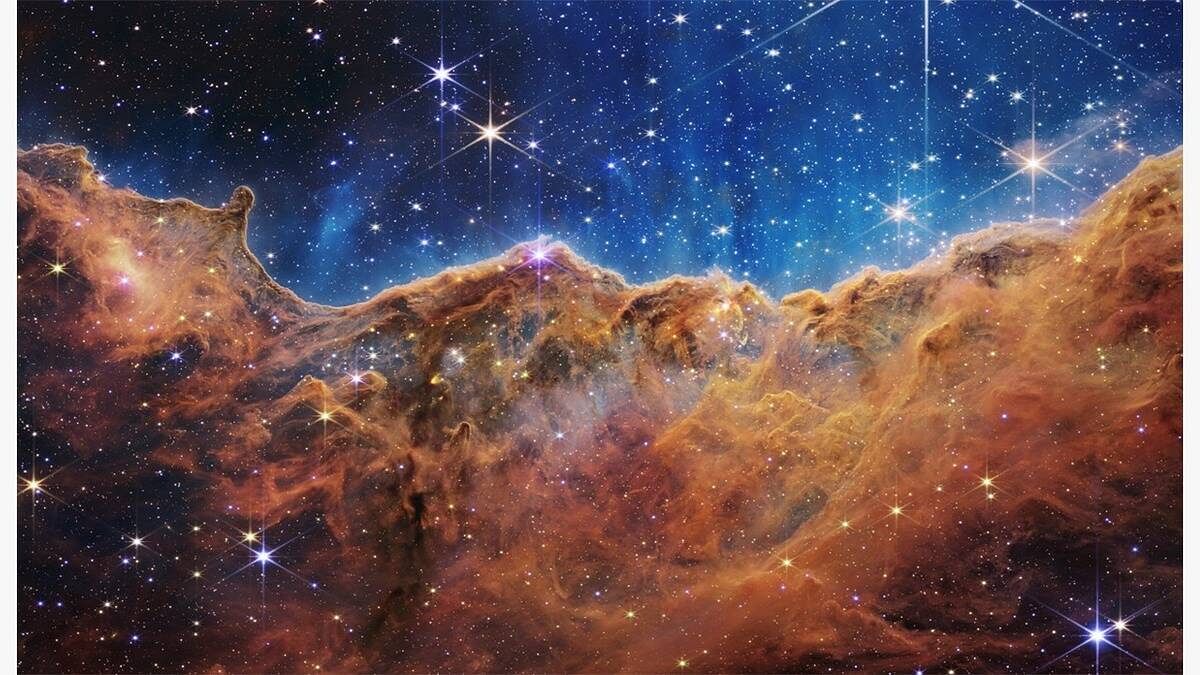
The fifth is a colourful image of the edge of a young, nearby star-forming region — NGC 3324 in the Carina Nebula — located about 7,600 light years away. What look like hills or mountains and valleys are actually regions in space blasted away by intense UV radiation and stellar winds from very massive young stars in the centre of the star forming region, above the region visible in the image.
The region has been imaged before, but Webb’s images reveal previously unseen stars and galaxies by the hundreds. The haze rising from the “Cosmic Cliffs” is hot ionised gas released from the nebula due to intense ultraviolet radiation. Protostellar jets, bursts of energy from newly forming stars, appear like flares of light around these young spots of light. There are bubbles visible within the gas structure, being blown by radiation and stellar wind or ionised particles from baby stars.
The name controversy
Astronomers have been asking to rename the James Webb telescope since 2021 when details surfaced about Webb’s alleged involvement in persecution of gay and lesbian federal employees.
The demands for renaming the telescope have gained renewed attention since the release of these images.
Webb’s policies and practices are thought to have led to a culture of institutionalised homophobia.
NASA’s current administrator, Bill Nelson, has refused to heed the demands: in 2021, he said NASA had not found any evidence that warrants a name change.
This story has been updated.
(Edited by Uttara Ramaswamy)
Also Read: Death in space — here’s what would happen to our bodies


